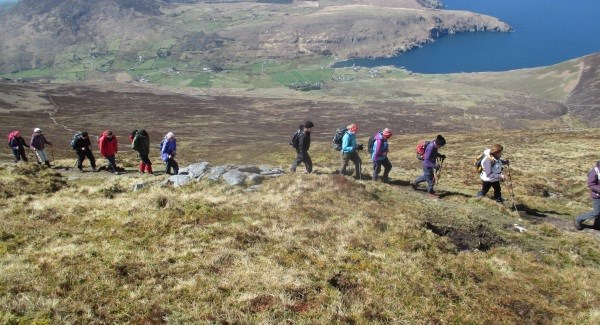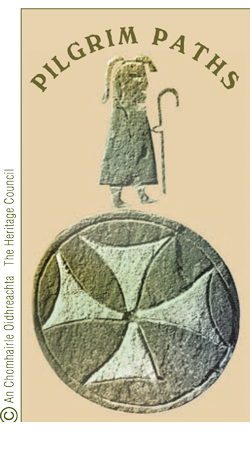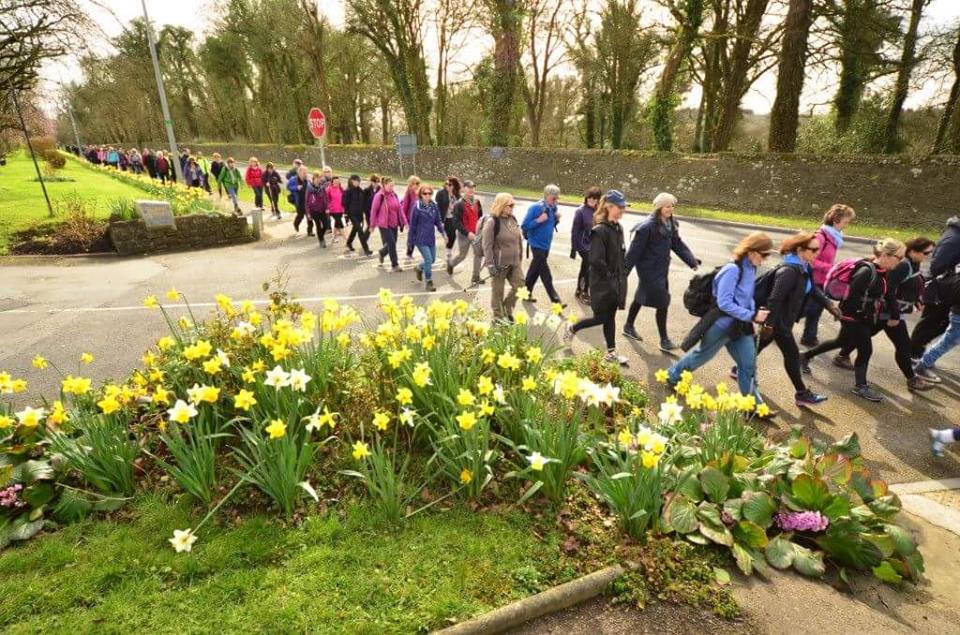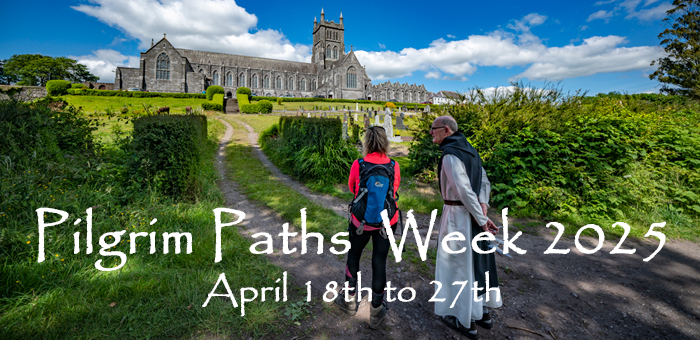John G. O’Dwyer – Irish Examiner
The Camino of St James has been the walking tourism phenomenon of the 21st century, with the numbers footing this network of Spanish routes rising from below 1,000 in 1985 to almost 300,000 today.

Pilgrims on Cnoc na dTobar pilgrim path in Caherciveen, Co. Kerry.
Until recently, none of the pilgrims bringing large amounts of badly needed spending into underdeveloped northwest Spain would have considered Ireland an alternative destination, since conventional wisdom held this country possessed no worthwhile penitential walks.
Actually, Ireland has a dense network of mystical paths and a vibrant pilgrim tradition with most routes predating the Camino.
Lough Derg was, and remains, one of Europe’s foremost pilgrim destinations while medieval penitents also journeyed to Glendalough, Skellig Michael, Gougane Barra and Croagh Patrick.
Despite past popularity, however, Ireland’s sacred trails were almost totally
forgotten for generations, since virtually nothing was done to reignite awareness of their existence.
It is sometimes said that the past never completely dies, but eventually comes to revisit us.
And now, pilgrim walkers are returning in increasing numbers to Ireland’s most revered tracks.
I may have played a modest part in this resurgence having walked the Irish Pilgrim Paths from Slemish to Skellig Michael in 2012 and then produced the first guidebook to these routes for the Collins Press.
The major contributory factor in this resurgence was undoubtedly, however, the foundation in 2013 of Pilgrim Paths Ireland.
An umbrella body for the voluntary groups involved with prompting Ireland’s main spirituality based routes, the objective of this non-denominational organisation is to generate increased pilgrim footfall, while also maximising tourism spend within rural communities.
One of the organisation’s first initiatives was an Irish Pilgrim Passport, offering an opportunity to explore five waymarked penitential routes through some of the most captivating scenery in the Irish landscape.
To meet the requirements laid down in the ‘passport’, walkers must produce evidence of having completed 120km of Ireland’s spiritual trails.
While many walkers are happy to do this alone or with friends, feedback suggested that others preferred the security and knowledge offered by a local guide.
Mindful of this, the latest venture from Pilgrim Paths Ireland takes place from August 19 to 26 and will be part of the celebrations for Heritage Week.
It consists of the first fully escorted journey along the passported pilgrim paths of Ireland.
The routes which will be completed are: St Finbarr’s Path, Cork (Aug 19/20); Cnoc na dTobar, Co Kerry (Aug 21); Cosán na Naomh, Co Kerry (Aug 22); St. Kevin’s Way, Co Wicklow (Aug 24) and Tóchar Phádraig, Co Mayo (Aug 26).
Guides will stamp pilgrim passports at the end of each walk.
With five stamps, participants can then obtain a Teastas (completion certificate) at journey’s end in Ballintubber Abbey, Co Mayo.
So, why not take a break from the stressful clutter of modern living by answering the ageless siren call to our pilgrim paths? For full information on what is involved with completing Ireland’s first fully escorted pilgrim journey or for just joining with one of the walks, further information is available at www.pilgrimpath.ie.
Pilgrim Paths in Ireland – A Guide by John G O’Dwyer is published by the Collins Press: collinspress.ie.
You can find the full article on the Irish Examiner website at http://bit.ly/2urFY8N.



